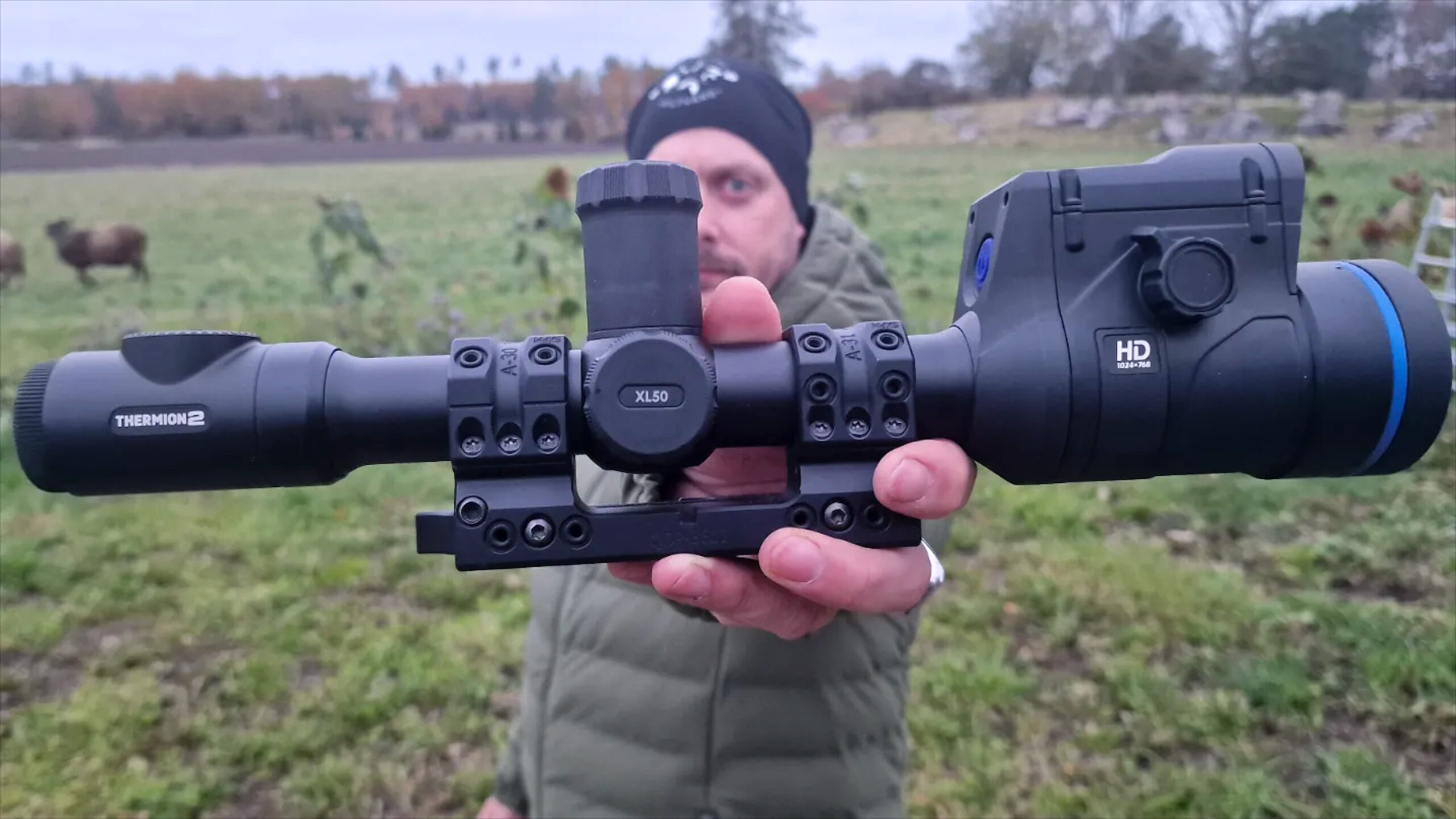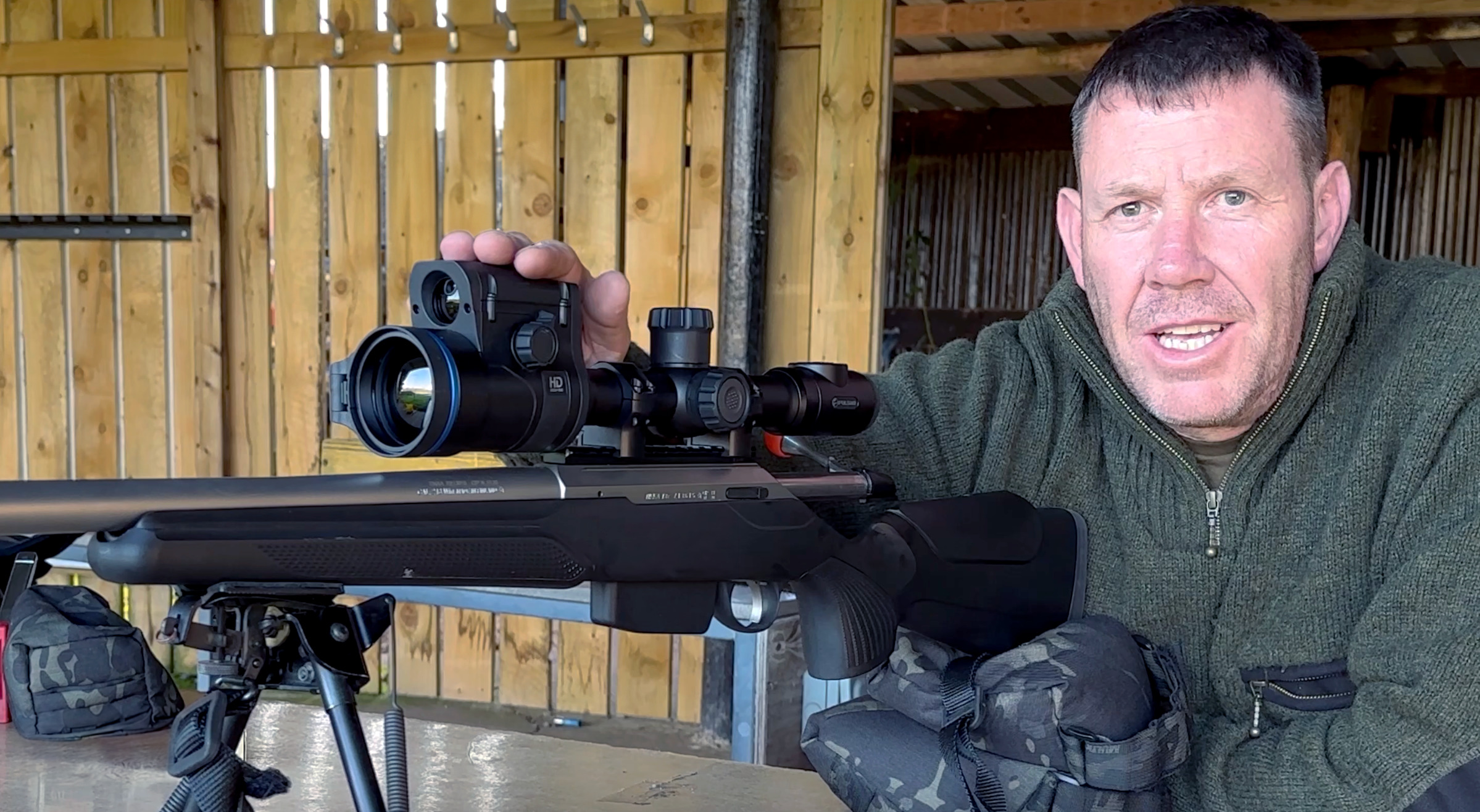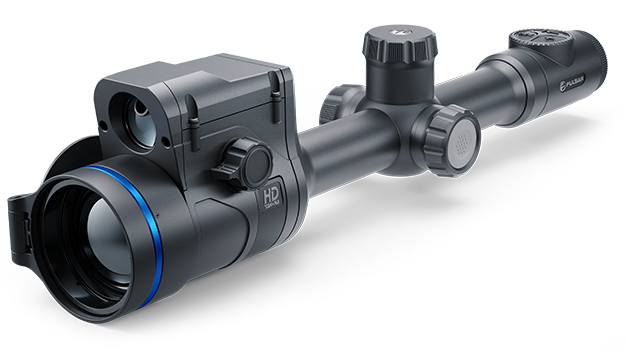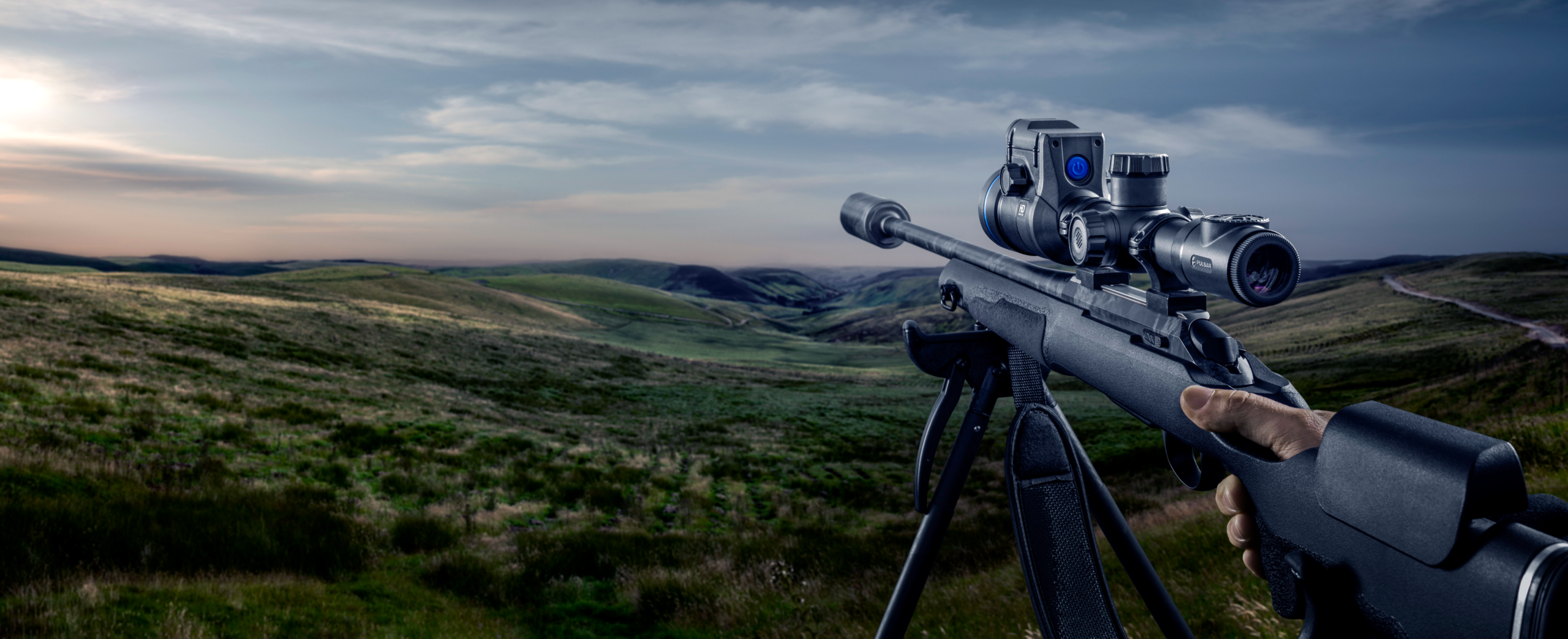The Pulsar Thermion 2 LRF XL50 is our first thermal imaging riflescope with an HD, 1024×768 resolution sensor, which allows for an incredible amount of image detail, even on high zoom. This, in turn, makes Thermion 2 LRF XL50 a great tool for shooting from both shorter and longer distances. But don’t take our word for it – take our hunters’, who have already been lucky to test out the device. Let’s see what Phil Taylor, a British hunter, and Stefan Orman, a Swedish hunter and shooting instructor, think about the new device.
What’s your general impression of the device?
Phil: On the outside, it looks like any other Thermion LRF, but on the inside is where the fun starts. The new HD thermal sensor is just something else. It takes thermal imaging to the next level again. Along with the built-in ballistic calculator, this is an all-round package.
Stefan: Well, my first initial impression is, “It‘s a Thermion”. So, it‘s very intuitive, it‘s well known, there are no surprises in operating it. The real impression, or the wow factor, is when you look through it. First of all, the wide field of view is very, very usable. We, in Sweden, mostly hunt wild boar, and it can be very close range. But the high resolution of the 12 µm pixel pitch and the long detection range that it offers through a 50 mm lens gives you an identification range that is much, much further.
It is very important because here, we really do want to identify the gender of the animals in order to see if it‘s right for us to shoot them. If it were a female with piglets, we wouldn‘t be able to shoot due to humane reasons. We choose the yearlings and the small ones so they don‘t lose their mother because their mother is crucial for food. So, gender identification is very, very important, and HD resolution is a great tool for it.

Stefan Orman
What’s the longest distance you’ve spotted an animal from? Were you able to identify it reliably?
Phil: I’ve not spotted anything so far at ridiculous distances as on the ground I shoot, there are lots of hedgerows which animals use as highways. But you can clearly identify the differences between deer, foxes, rabbits, and badgers at 400 + yards.
Stefan: ID is a difficult one. It‘s going to differ between hunting cultures. For me, identification is gender-identifying, which is going to be a lot less than species-identifying. However, to identify a wild boar, you can see if it’s the right species from 1 km.
Then, for shooting, seeing if it’s male, female, or female with piglets, that’s a tricky one, and you want to get in quite close. Within a few hundred meters, you will be able to identify males from females easily. But sometimes, it can be very difficult, even at 100 m. If they’re about 1–1.5 years of age and they don’t have any piglets, it can be difficult to see the difference between a male and a female. Even if you’ve got the best magnification, thermals can be difficult at some points.
What would you name as the biggest benefit of Thermion XL?
Phil: Obviously, the massive thermal sensor is the biggest benefit – 1024×768 12-micron <35 mK NETD, but the 2 biggest benefits for me are the magnification range and the field of view.
With any digital zoom, you are always going to get pixelation, but the HD sensor seems to hold the image really stable and minimizes the pixelation, which, when you’re taking it to x14 mag, really helps. The massive 14-degree FOV is also fantastic on the base mag. Another added bonus is getting the extra APS3 battery included, which extends the battery life slightly.
Stefan: I, too, would name the massive field of view and the long identification range as the greatest advantages, but I would also like to add the overall versatility of the scope.

Phil Taylor
How do you use the device?
Phil: For me, it will be a tool for pest control. The clarity of the picture is insane; it will enable you to track an animal from a greater distance on a higher magnification.
Stefan: It‘s a versatile scope. It’s a scope that, due to rules and regulations in Sweden, is mostly going to be used for wild boar. There are, occasionally, people with special permits who can hunt fallow deer and other game with thermals. This is a very good optic because of the very good identification possibilities. As it is HD, it gives you more detail, a better image, and more information about the animal to see if it’s the right species, the right size, the right gender, and all other things.
What’s your favorite thing about it?
Phil: There are lots of things that are really nice about this scope, obviously the clarity of the sensor, clarity on higher magnification, the added addition of a bigger spare battery, and the remote control.
Stefan: The LRF ballistic calculator. I love it, it’s a very great tool. But there is also something I want to emphasize really, really clearly. This is specialized equipment. If you have no idea how to set up a ballistic calculator, you don’t know the factors that can differ; for instance, there are small things that you might get tricked with if you take the information from the box of your ammunition, that is not going to be true to your rifle. And that will also give you unreliable point of impact shifts. So you might be zeroing at 100 m with that particular ammunition, but the information that you put into the calculator is going to be off. And that will give you the wrong suggested point of aim.
The ballistic calculator is not a cheat code to learn how to do long-range. It’s still a tool that requires knowledge. If you’re going to use it, you’ll need to understand this and respect it. Otherwise, you’ll have problems and unreliable results that can cause not a clean kill but an injury to an animal, which is very, very unethical.
Phil, do you use the ballistic calculator?
Phil: The ballistic calculator is a fantastic addition if used correctly. You need to spend time making sure the information you add is correct. I’d highly recommend putting your ammunition over a chronograph. And although you are getting your new point of aim calculated for you, don’t shoot outside of your comfort zone.
On the outside, it looks like any other Thermion LRF, but on the inside is where the fun starts. The new HD thermal sensor is just something else. It takes thermal imaging to the next level again.
Phil Taylor

Can you elaborate on the remote control?
Phil: The remote control is a nice addition to the box. It will take a little training of the brain for me to use that rather than the scope buttons, as I’ve been used to shooting without the aid of a remote.
Stefan: Love it! It’s a really great addition to the Thermion family. The Thermions are pretty well thought-out in their ergonomics. However, the remote does bring an easier way of using it. I always have my remote control around my neck. When I set my rifle up, if I’m lying down prone, I can have it in my left hand as I’m manipulating it. If I want to have it back, my left hand has support for my buttstock. Sometimes, I’ll fit it on my hand guard of the rifle. Your imagination sets the limit of where you can put the remote, how you can use it, and how to improve the ergonomics of the rifle by using the remote control. It’s a great addition.
What kind of hunter do you think will benefit most from the Pulsar Thermion 2 LRF XL50?
Phil: This is certainly a scope for the professional shooter and serious pest controller. With the laws changing in the UK, specifically in Scotland, allowing thermal to be used for deer management, this will certainly be a scope for that job. Especially with the aid of the ballistics calculator, I can see this being an advantage on the open hill.
Stefan: I, too, think it‘s a professional tool. Maybe the average hunter doesn‘t need a massive field of view or a very long identification range. For someone who needs maximum versatility, from close range to long range, the XL50 outshines everything. There‘s no question about it. And if you have a dedicated rifle with a dedicated scope for various situations, that‘s where I think the XL50 is going to shine. Because of the wide field of view and a long detection range, it‘s by far the most versatile scope. You‘re basically buying everything that Pulsar can offer you in one scope.
Before purchasing any night or thermal vision device, please make sure you adhere to the local legislation and only use it when it is allowed. Our ambassadors come from various countries and travel a lot, which allows them to test different devices. We do not encourage or support the illegal use of our devices in any events. If you wish to learn more about export and sales restriction policy, please visit the following link: Export and Sales Restriction Policy.
